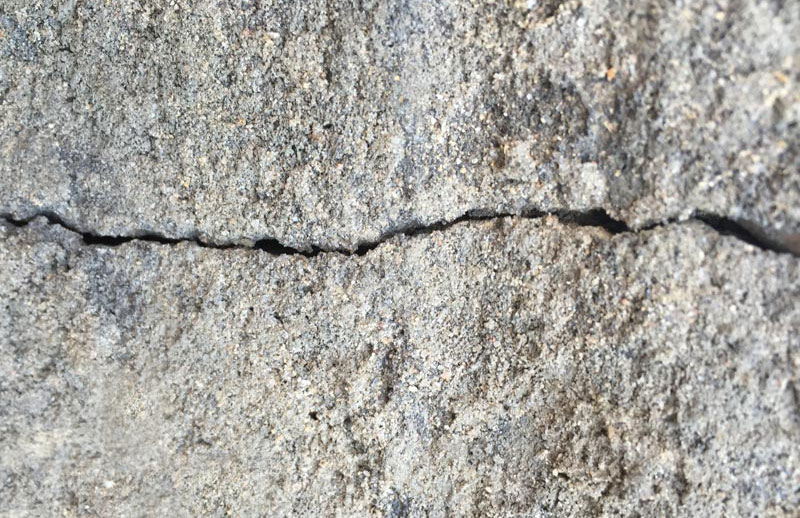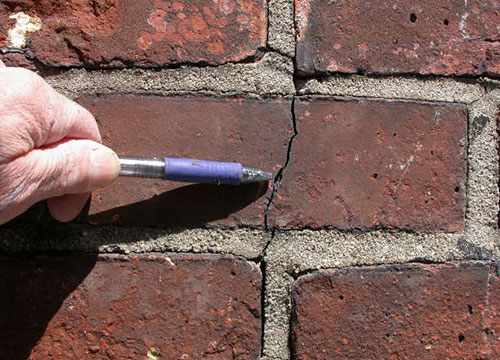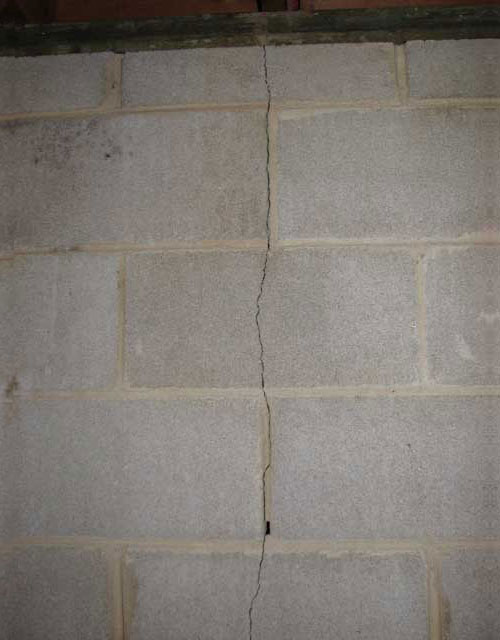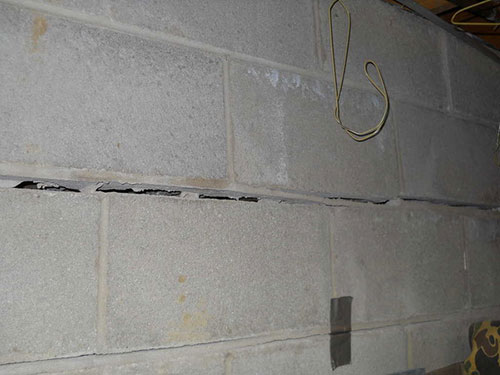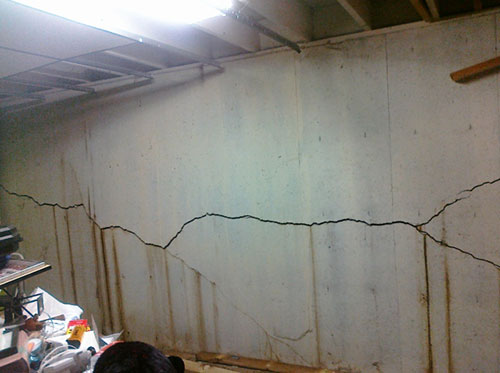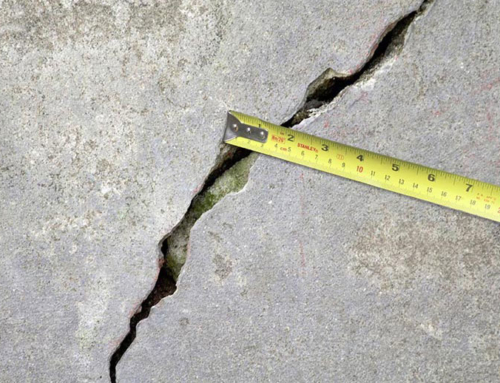In Article 2: Types of Cracks – Part I, six general categories of foundation cracks were introduced and three were discussed in detail. In the second part, the other three types of cracks and the cause of cracking will be discussed in detail.
As described in the previous article, the types of foundation wall cracks can be divided into six general categories:
Hairline Crack
Cracks at L-Shaped Sections
Stair-Step Cracks
Settlement Cracks
Vertical Cracks
Horizontal Cracks
Cracks in the basement walls are one of the main reasons that we are asked by concerned homeowners to visit their building and provide an assessment. Knowing some basic information about the type and location of the cracks can help homeowners determine when they should call in a specialist.
Cracks appearing on basement walls could indicate sliding of the foundation wall due to some lateral force. Being able to identify the type of crack and knowing the reason the crack is forming will help in knowing when an expert needs to be called in to resolve the situation.
Among the different types of foundation cracks, horizontal cracks require the most urgent attention; some types of vertical cracks may require immediate attention as well.
4 – Settlement Cracks
The soil under buildings settles over the time. If this settlement is within the allowable limit, small cracks may form and this is normal. However, if the settlement occurs in a short time and at a rate higher than allowable limit, formation of cracks may indicate that the foundation has serious problems. If the design of the footing is not done properly, the footing and the soil underneath are not able to withstand the weight of the building and the footing slowly sinks into the soil. This slow movement eventually causes cracks in the foundation walls and in the footing itself.Building settlement sometimes happens for reasons that are beyond control. For example, if the soil around the building becomes saturated because of excessive rain or floods, or if a seasonal drought causes the drying of the soil, the footing and foundation walls will crack and cause problems. Also, if a long winter season freezes the saturated soil deep in the ground, the soil could expand due to the frost which can causes cracks which represent serious problems as well.
In saturated soil, a rise in the groundwater level exerts additional pressure on the floors and foundation walls. On the other hand, in drought season, water in the soil evaporates causing compaction of the soil and resulting in footing settlement. Depending on the soil type, these settlements might be serious issues. Asymmetric settlements are the main reason for cracks in walls and other basement surfaces.
Vertical and stair-step cracks are examples of the result of building settlement. Stair-step cracks were previously described in Article 2.
5 – Vertical Cracks
These cracks may not be totally vertical and may be step shaped. However, this type of crack occurs in uneven settlement conditions rather than due to the normal settlement of the building over time as described in the to the stair-step cracks section in Article 2.
It was indicated in stair-step cracks discussion that they primarily appear on the mortar between the concrete blocks; however, a vertical crack that looks like a stair-step crack also passes through the block or brick and generally the path is more vertical.
This usually occurs as a result of concrete shrinkage and wall movements due to sudden temperature changes. Refer to Figures 1 and 2 of examples of vertical cracks.
One of the main ingredients of concrete and concrete block is water. There is an abundance of water in the mortar as well but only a portion of that water is consumed for chemical reactions leading to the setting of concrete.
After pouring the concrete for footing and foundations walls, the extra water will evaporate gradually in the process of concrete hardening.
Evaporation of water results in a slight shrinkage in the concrete walls and footing. While the wall wants to shrink its connection to other structural elements restricts this shrinkage which results in vertical cracks forming on the wall.
Another reason for vertical cracks in the foundation walls is sudden changes in temperature which causes shrinkage in the walls, thus creating cracks. As an example, a drastic drop in temperature during night and the sudden temperature increase during daytime may cause vertical cracks.
These kinds of vertical cracks usually do not affect the structural integrity or the resistance capacity of the foundation walls. Although it is still advised that owners monitor the crack and record the dimensions as outlined in Article 1.
As explained in previous articles, an expert’s opinion is likely required if the crack is live and spreading.
Since vertical cracks are occasionally caused by excessive lateral pressure being applied to the back of the foundation walls, it is advised that necessary measures to repair the walls be taken as soon as possible.
More details about vertical cracks caused by lateral forces will be discussed in Article 4
6 – Horizontal cracks
These cracks are the most critical and are an indication of danger due to structural integrity which requires the immediate attention from a Structural Engineer. Monitoring these cracks as discussed in previous articles is strictly not advised.
Refer to Figures 3 and 4 of examples of horizontal cracks.
Horizontal cracks on the foundation walls indicate that there is a serious problem in the foundation system. Often these cracks are accompanied by bowing, swelling or bending in the walls. All the signs mentioned does not necessarily mean a sudden collapse of the walls is imminent, but there is a drastic decrease in the walls’ resistance against lateral and gravity forces.
It should be noted that horizontal cracks, however small, should be considered as a serious matter. It has been proven that a horizontal crack significantly reduce the safety index of structures.
Upon identification of these cracks, it is strictly advised to contact a Structural Engineer or a foundation expert. The foundation walls not only resist against soil movement, but also create a support for the internal walls and floors.
The failure of foundation walls could result in partial or complete collapse of the structure.
A brief list of reasons for horizontal cracks in the foundation walls (basement walls) includes:
1. Frost Pressure
2. Wet Soil
3. Vehicle Loads (adjacent to building)
4. Expansive Soil
5. Tree Roots
6. Impact Damage
The Articles 4 and 5 will further discuss reasons for the formation of horizontal cracks and common repair methods.
